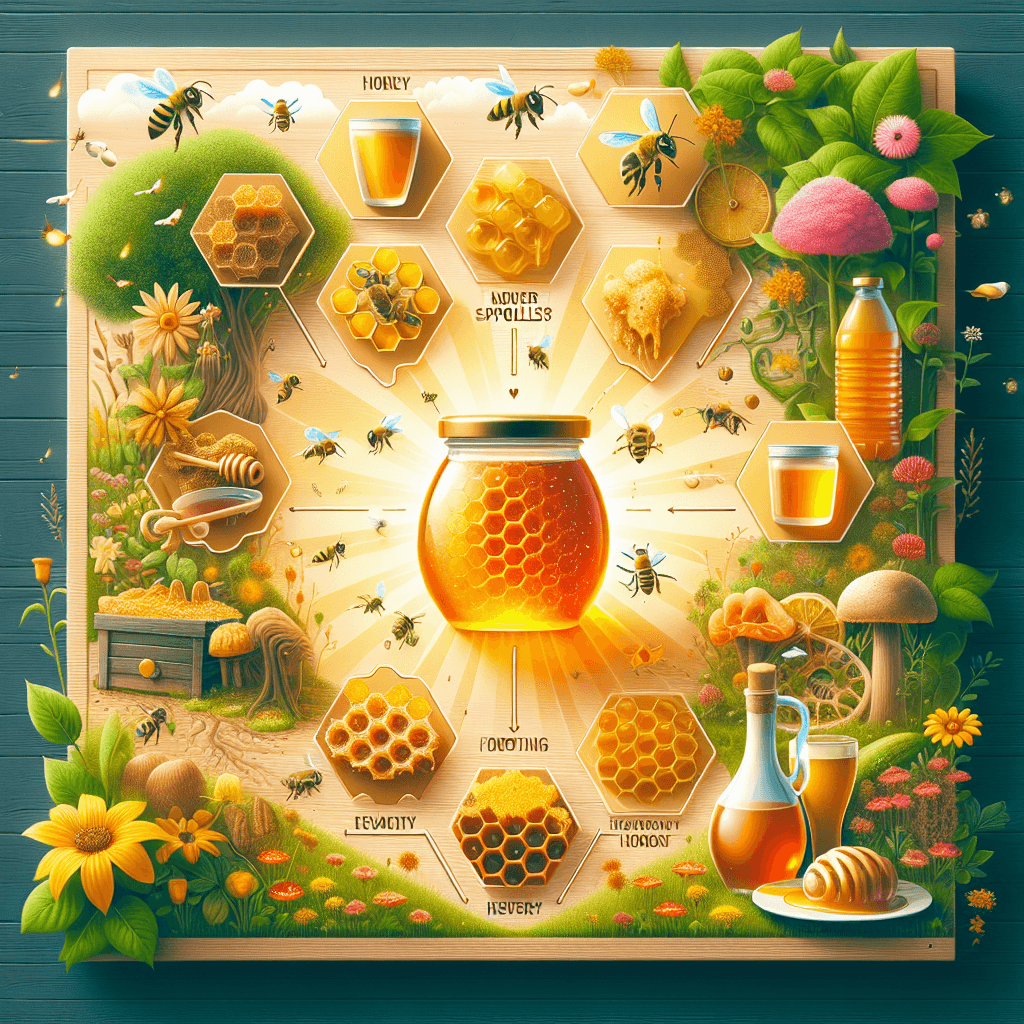Why is honey one of the only foods that never really spoils
It’s not magic that allows honey to last for millennia; it’s a brutal chemical makeup that suffocates and destroys any bacteria that dares to invade.


Too Long; Didn't Read
TLDR: Honey lasts forever because it has very little water, is highly acidic, and naturally contains hydrogen peroxide, creating an environment where bacteria and other microbes cannot survive.
The Sweet Secret to Immortality: Why is Honey One of the Only Foods That Never Really Spoils?
Have you ever heard the astonishing tales of archaeologists uncovering pots of honey in ancient Egyptian tombs, thousands of years old, and finding them still perfectly edible? It sounds like a myth, but it’s a well-documented fact. This raises a fascinating question: Why is honey one of the only foods that never really spoils? Unlike the bread, milk, or fruit in our kitchens that have a ticking clock, pure honey possesses a seemingly eternal shelf life. This incredible longevity isn't magic; it's a perfect storm of unique chemical properties. This post will explore the fascinating science behind honey's status as nature's most resilient food.
A Hostile Environment for Microbes
The secret to honey's eternal life lies in its chemical makeup, which creates a brutal environment for the bacteria and microorganisms that cause other foods to spoil. Three key factors work in perfect harmony to make honey a microbial wasteland.
1. Extremely Low Moisture Content
First and foremost, honey is a sugar, but it's one with very little water. Most foods spoil because of tiny organisms, like bacteria and yeast, that need a moist environment to thrive and reproduce. Honey, however, has a very low "water activity"—a measure of the available water that microbes can use.
- The Process: Bees play a crucial role in this. They collect nectar, which is about 80% water, and through a process of regurgitation and fanning their wings, they evaporate the excess moisture.
- The Result: The final product is a supersaturated sugar solution that is typically less than 18% water. When a microbe lands on honey, the hygroscopic nature of the honey essentially sucks the water right out of the microbe's cell walls through osmosis, dehydrating and killing it before it can do any damage.
2. A Highly Acidic Nature
If the lack of water doesn't stop a microbe, honey's acidity probably will. Honey is surprisingly acidic, with a pH level typically falling between 3.2 and 4.5. This is comparable to the acidity of a tomato or an orange. This acidic environment is incredibly inhospitable to most bacteria and other potential contaminants, which prefer a more neutral pH to grow. This acidity is created by the presence of several acids, most notably gluconic acid, which is produced when bees add a special enzyme called glucose oxidase to the nectar.
3. The Bee's Secret Weapon: Hydrogen Peroxide
Perhaps the most fascinating part of honey's defense system is its ability to produce its own antibacterial agent. As mentioned, bees add the enzyme glucose oxidase during the honey-making process. This enzyme remains dormant in the thick, water-poor environment of mature honey.
However, if a small amount of water is introduced—say, by a microbe attempting to colonize the honey—the enzyme springs into action. It breaks down the glucose in the honey, and one of the byproducts of this reaction is hydrogen peroxide. Hydrogen peroxide is a powerful antimicrobial agent that actively destroys cell walls, providing another potent layer of protection against spoilage.
What About Crystallized Honey?
Many people mistakenly believe that when honey crystallizes, it has "gone bad." This is a common misconception. Crystallization is a completely natural process and a sign of high-quality, raw honey. It occurs because honey is a supersaturated solution of glucose and fructose. Over time, the glucose can separate from the water and form tiny crystals. The honey's texture and color may change, but its nutritional value and safety remain intact. You can easily return crystallized honey to its liquid state by gently warming the jar in a bowl of warm water.
Conclusion
Honey's incredible resistance to spoilage is a masterclass in natural food preservation. It’s not one single factor, but a powerful combination of three: its extremely low moisture content dehydrates microbes, its natural acidity creates a hostile environment, and its ability to produce hydrogen peroxide acts as a built-in antibacterial defense. This trifecta of properties ensures that pure, properly stored honey will remain safe and edible indefinitely. So, the next time you drizzle some of this liquid gold onto your toast, take a moment to appreciate the remarkable work of bees and the perfect, self-preserving food they create.


